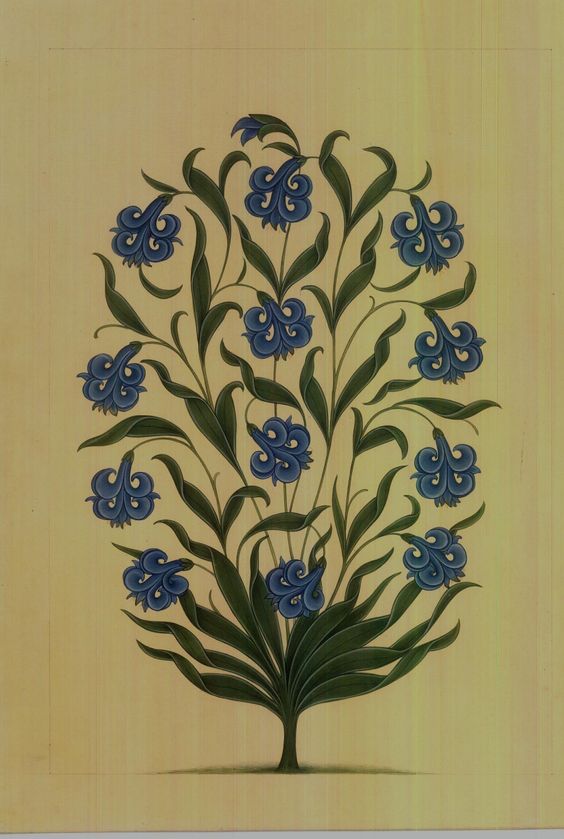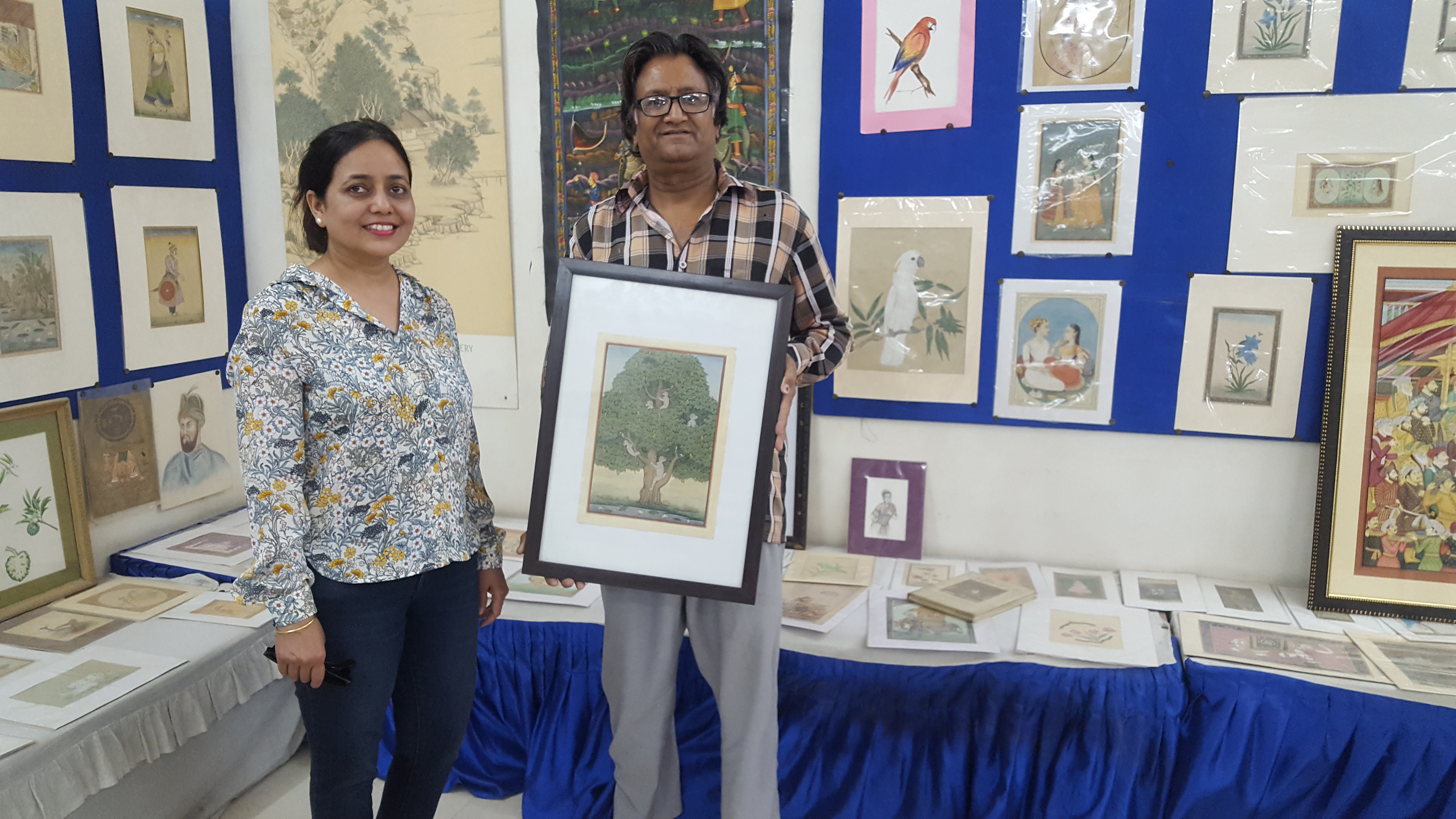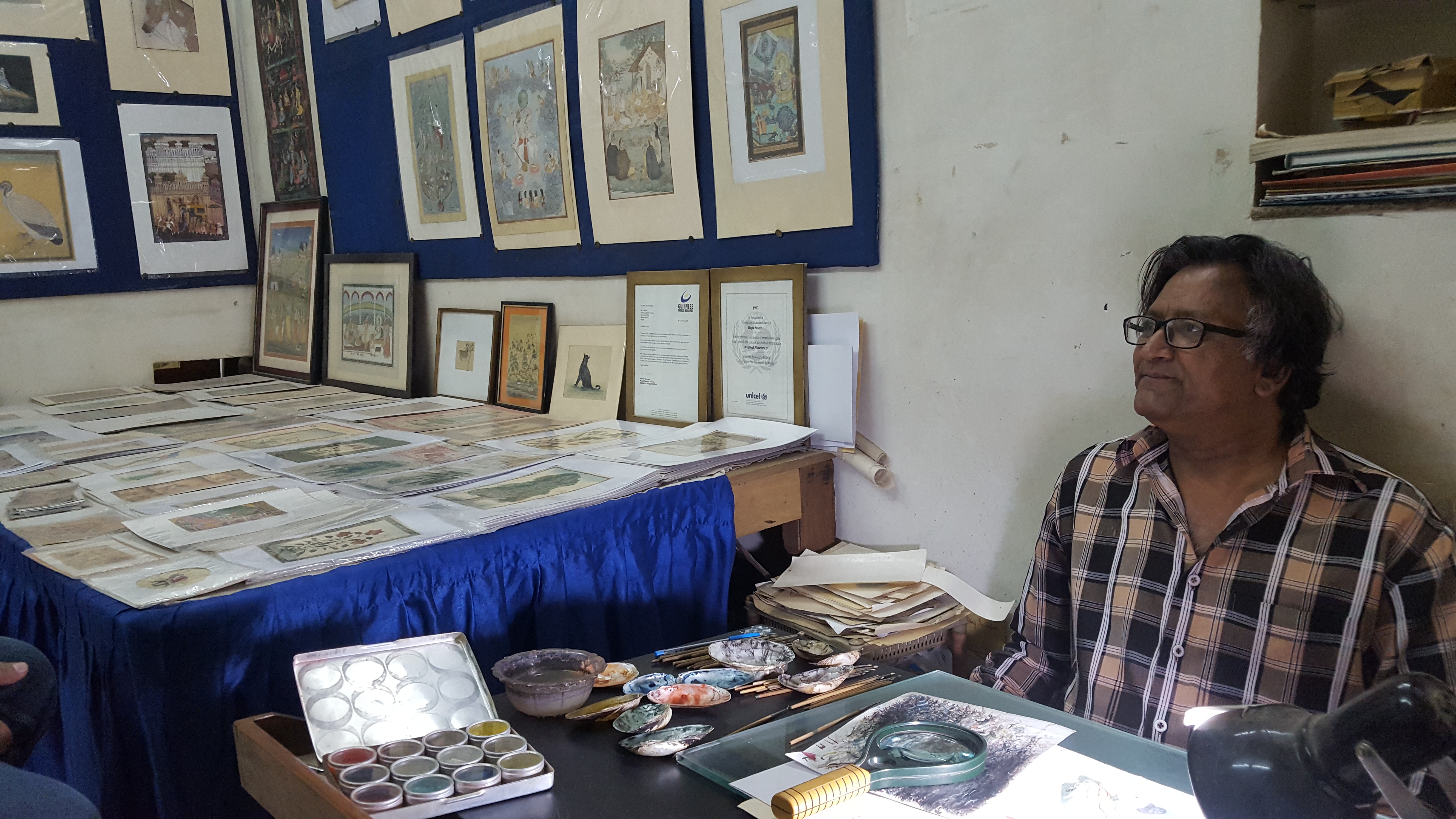Amidst the deserts of Rajasthan, this man is painting trees. Raju Swami a miniature artist has painted so many artworks, but his domain- the plant kingdom is something that puts him a class apart. Dr. Anju meets him in his studio, which is much like an oasis in the desert.

When did you think of painting botanical art in miniatures and why?
Miniature painting is our family legacy. We are into it from last 6-7 generations. I learnt the art from my father. Our studio however, specializes in botanical art, especially trees and traditional flowers. The art is Mughal style botanical paintings. Even as I do the other sort pf paintings, trees are a major backdrop in them. Our art is so intricate that you need a magnifying glass to see them. In a tree there are thousands of leaves painted.
Naveen Patnaik wrote a book “The Garden of Life” in 1993. Looking at my work, he invited me to travel along and together with other artists we did quite a lot of botanical and herbal paintings. The book covers about 70 plants ranging from herbs, culinary, cosmetic and aromatic species. It was an amazing experience through this project and it connected me more with the plant kingdom. I also enjoy doing fruits and other animals paintings.
What colors and medium do you use?
We use antique and hand-made papers. The colors are all natural pigments which are grinded from stones or extracted from vegetables- such as indigo, chalk, limestone, lapis lazuli, cinnabar, lacquer, charcoal etc. They are prepared and blended with gum before painting. The brushes are made squirrels tails. We also use gold leaf for the golden colors as needed.

How much time do you take in creating one art piece?
Depending upon the scope of works it may take a few weeks to months to even a couple of years. I usually engage myself in a big project and a few small creatives simultaneously to disengage.
What is your aspiration?
My paintings have travelled across the world- right from UNICEF greetings to various exhibits at International levels and places including Botanical Art and Illustration organized by Hunt Institute of Botanical documentation in Pittsburgh, USA. I am hoping that this kind of work gets more recognition and promotion, so that it continues to flourish and the art form does not fade away. I have been trying for the Guinness book of records. My younger son is trying to make this art more contemporary connecting it with spaces backdrops and digital gadgets. We continue to teach students every year in our studio and art school.

